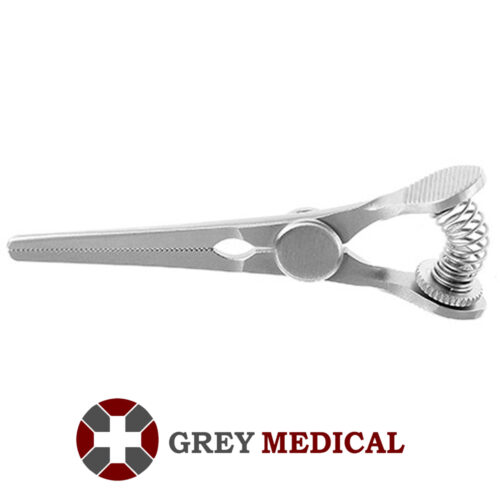Jacobson Clamp: Precision and Control in Vascular and Microvascular Surgery
Jacobson Clamp: Precision and Control in Vascular and Microvascular Surgery
Blog Article
The Jacobson clamp is a highly specialized surgical instrument designed for use in delicate vascular and microvascular procedures. Known for its fine tips and precision, this instrument is essential for Jacobson clamp small blood vessels with minimal trauma. Its innovative design provides surgeons with the control and reliability needed in intricate surgical tasks, making it a critical tool in cardiovascular, neurovascular, and reconstructive surgeries.

Features and Design of Jacobson Clamp
Jacobson clamps are characterized by their lightweight construction and finely serrated jaws. The tips are typically long, slender, and tapered, allowing for precise handling of small vessels and tissues. Many models include atraumatic or delicate serrations to prevent damage to the vessel walls during clamping. The handles are ergonomically designed for ease of use and to reduce hand fatigue during lengthy procedures. Made from high-quality stainless steel or titanium, Jacobson clamps are durable, corrosion-resistant, and capable of withstanding repeated sterilization.
Applications in Surgery
Jacobson clamps are indispensable in surgeries involving fine and delicate vascular structures. Common applications include:
- Cardiovascular Surgery: Used for temporarily clamping small arteries or veins during bypass surgeries or vascular repairs.
- Microvascular Surgery: Essential for procedures requiring the precise handling of tiny vessels, such as free flap reconstructions or reanastomosis of severed blood vessels.
- Neurovascular Surgery: Employed in surgeries involving cerebral arteries or veins, where precision is critical.
- Plastic and Reconstructive Surgery: Used for securing blood vessels during intricate reconstructive procedures like rhinoplasty or facial reconstructions.
Benefits of Jacobson Clamps
The Jacobson clamp offers unparalleled precision and control, making it ideal for handling delicate vessels and tissues. The atraumatic design minimizes damage to vessel walls, reducing the risk of complications like thrombosis or vessel tearing. Its lightweight construction and ergonomic handles enhance surgeon comfort, allowing for accurate and steady performance during complex procedures. Additionally, the high-quality materials ensure durability and long-lasting sharpness, making it a reliable choice for repeated use.
Choosing the Right Jacobson Clamp
Selecting the appropriate Jacobson clamp depends on the specific surgical procedure and the size of the vessels involved. Factors to consider include the length of the clamp, the shape of the jaws (straight or curved), and the type of serrations. Titanium options are often preferred for their lightweight and non-corrosive properties, particularly in microvascular and neurovascular surgeries.
Maintenance and Care
Proper maintenance of Jacobson clamps is essential to ensure their longevity and performance. After each use, the clamps should be thoroughly cleaned and sterilized to remove any biological debris and prevent contamination. Regular inspections for wear, such as dull serrations or loose joints, are critical to maintaining their precision and effectiveness. Proper storage in a protective case or tray can also prevent accidental damage.
Conclusion
The Jacobson clamp is a cornerstone instrument in vascular and microvascular surgery, offering precision, control, and reliability for delicate procedures. Its finely crafted design ensures minimal tissue trauma while providing surgeons with the confidence to perform intricate tasks with accuracy. By selecting high-quality Jacobson clamps and adhering to proper maintenance protocols, surgeons can achieve optimal results and copyright the highest standards of patient care.